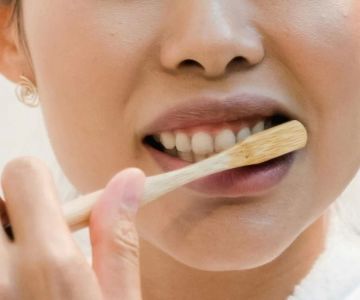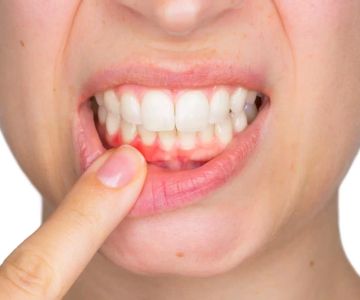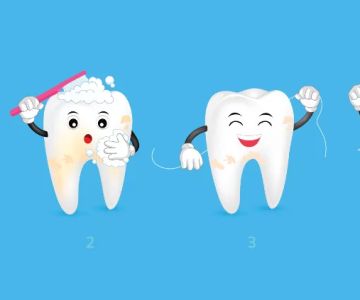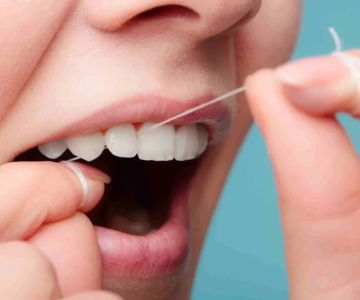How to Improve Your Brushing Technique for Healthier Teeth
- Why Brushing Technique Matters
- Common Mistakes People Make When Brushing
- Steps to Improve Your Brushing Technique
- Choosing the Right Tools for Brushing
- How to Maintain a Consistent Brushing Habit
1. Why Brushing Technique Matters
Brushing your teeth might seem like a simple task, but the technique you use plays a crucial role in the health of your teeth and gums. Proper brushing helps to remove plaque and prevent gum disease, cavities, and enamel wear. On the other hand, improper technique can lead to ineffective cleaning, causing long-term damage to your dental health. So, improving your brushing technique is essential to ensure your smile stays bright and healthy.
2. Common Mistakes People Make When Brushing
Many people unknowingly make common mistakes when brushing their teeth. Here are a few of the most frequent issues:
- Brushing too hard: Using excessive force can cause enamel wear and gum recession.
- Brushing for too short a time: Brushing for less than two minutes often results in incomplete cleaning.
- Using the wrong angle: Holding the toothbrush at an incorrect angle can lead to ineffective plaque removal.
Being aware of these mistakes can help you avoid them and improve your brushing routine for better oral health.
3. Steps to Improve Your Brushing Technique
Improving your brushing technique involves a few simple but essential steps. Follow these tips to brush more effectively:
- Use the right brush: Choose a soft-bristled toothbrush that is gentle on your gums and teeth.
- Hold the toothbrush at a 45-degree angle: This allows the bristles to reach both your teeth and gums for a thorough cleaning.
- Use gentle, circular motions: Avoid back-and-forth scrubbing, as it can harm your enamel. Instead, use small circular movements to clean each tooth.
- Brush for two minutes: Aim to brush for a full two minutes, making sure you clean every surface of your teeth and gums.
4. Choosing the Right Tools for Brushing
Using the right tools is essential for maintaining optimal oral hygiene. Here’s how to choose the right toothbrush and toothpaste:
- Toothbrush: Select a toothbrush with soft bristles to avoid damaging your enamel or gums. Electric toothbrushes are also a great option for more consistent brushing.
- Toothpaste: Choose a fluoride toothpaste to help strengthen your enamel and prevent cavities.
- Additional tools: Consider using floss or interdental brushes to clean between your teeth, as this can help reduce plaque buildup in hard-to-reach areas.
5. How to Maintain a Consistent Brushing Habit
Consistency is key to maintaining healthy teeth. Here’s how to ensure you brush your teeth properly every day:
- Set reminders: If you tend to forget, set a reminder to brush your teeth at least twice a day, in the morning and before bed.
- Make it a routine: Try to brush your teeth at the same times each day, making it a non-negotiable part of your daily schedule.
- Stay motivated: Keep track of your oral health progress and reward yourself for staying consistent with your brushing habits.
By sticking to these practices, you can build a lifetime habit of good oral hygiene and improve your brushing technique along the way.







 Westgate Dental Arts3.0 (2 review)
Westgate Dental Arts3.0 (2 review) Coventry Family Dental4.0 (247 review)
Coventry Family Dental4.0 (247 review) Familia Dental3.0 (1028 review)
Familia Dental3.0 (1028 review) Dr. Daniel S. Fife, DDS4.0 (31 review)
Dr. Daniel S. Fife, DDS4.0 (31 review) Dentistry At Suburban Square: Michael I. Wollock, DMD4.0 (1228 review)
Dentistry At Suburban Square: Michael I. Wollock, DMD4.0 (1228 review) Comfort Care Dental4.0 (1156 review)
Comfort Care Dental4.0 (1156 review) The Importance of Oral Health Education During Pregnancy for a Healthy Pregnancy
The Importance of Oral Health Education During Pregnancy for a Healthy Pregnancy Why Skipping Dental Checkups Can Lead to Bigger Oral Health Problems
Why Skipping Dental Checkups Can Lead to Bigger Oral Health Problems Best Tips for Brushing Your Teeth Properly for Healthy Gums: Essential Techniques for Oral Health
Best Tips for Brushing Your Teeth Properly for Healthy Gums: Essential Techniques for Oral Health Advantages of Porcelain Dental Restorations
Advantages of Porcelain Dental Restorations How Can Diabetes Cause Tooth and Gum Problems? Preventing and Managing Oral Health Issues
How Can Diabetes Cause Tooth and Gum Problems? Preventing and Managing Oral Health Issues Healthy Habits for Promoting Good Oral Health and Hygiene: Tips for a Healthy Smile
Healthy Habits for Promoting Good Oral Health and Hygiene: Tips for a Healthy Smile